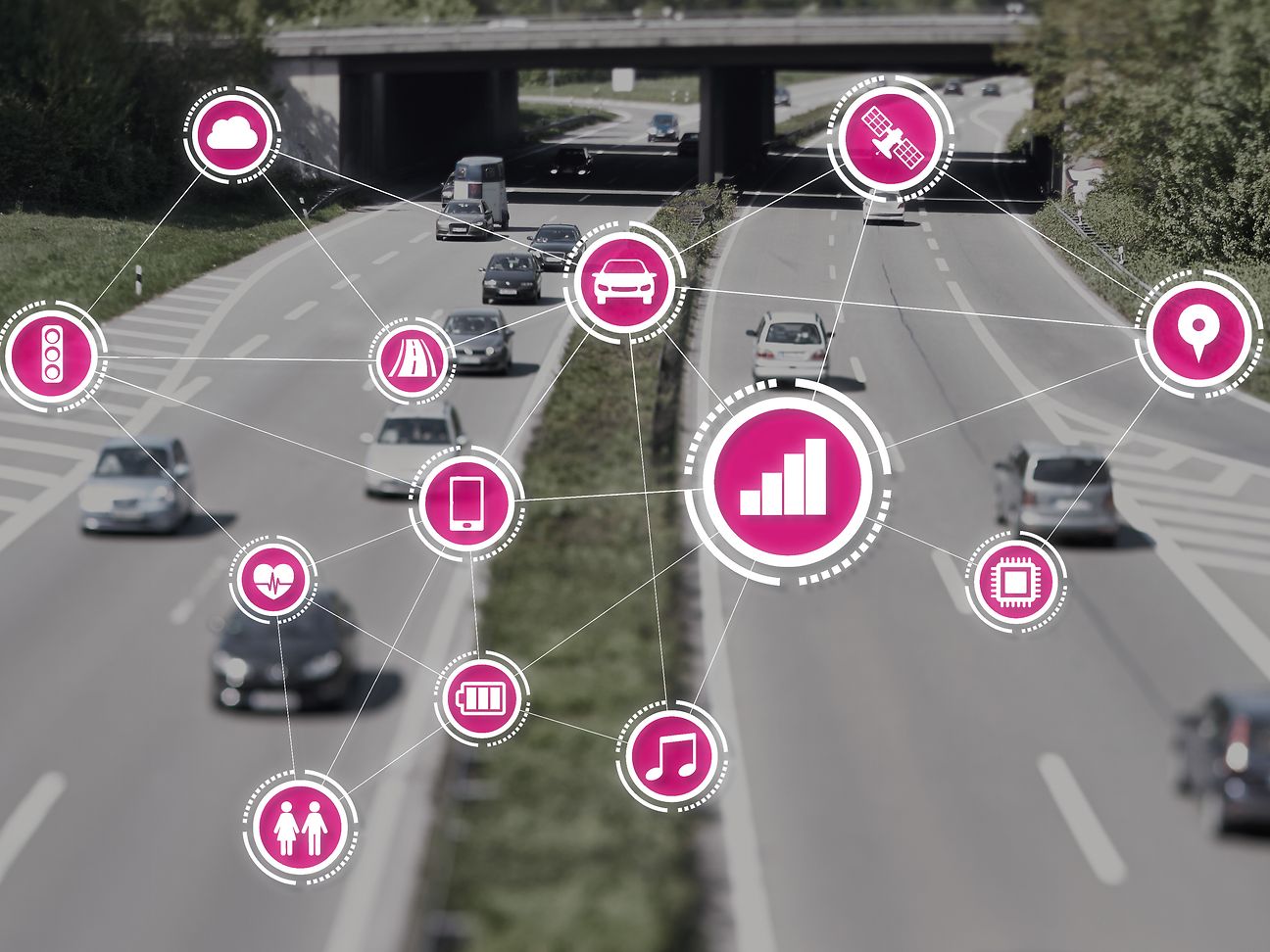Easy & simple: Automated Driving
Automated driving is based on data that not only the car collects, but also sensors in the environment. These include, for example, traffic and weather data or the connection to various cloud systems. This enables the car to react automatically to traffic jams, avoid unspread roads in the event of icy roads, send maintenance messages and arrange workshop appointments.
Not only cars greet each other ...
Communication between vehicles is essential for autonomous driving. This is made possible by sensors, for example in intelligent camera systems. Some of this already exists today. But there is one major disadvantage: sensors and systems do not look around corners or through an obstacle. That’s why a strong mobile network helps. Then cars can also get information about the traffic jam behind the next bend. Or they can talk to traffic lights, parking sensors or distant vehicles.
What difference does 5G make?
Many of the applications of automated driving are already possible today with LTE technology. 5G extends the possibilities through low latency times, i.e. faster network response. This makes it possible, for example, to have an external controller remotely control a vehicle in emergency situations.
You can find more information about automated driving in a 5G-network here.
